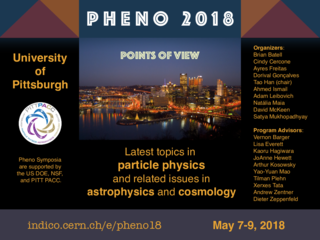Speaker
Description
Recently the Experiment to Detect the Global Epoch of Reionization Signature (EDGES) reported the detection of a 21cm absorption signal stronger than astrophysical expectations. The radiation from dark matter (DM) decay and primordial black holes (PBH) injects energy into the intergalactic medium, which can heat up neutral hydrogen gas and weaken the 21cm absorption signal imposing constraints. Injection models considered are decay channels DM$\rightarrow \gamma\gamma$, e^+e^-, $\mu^+\mu^-$, $\tau^+\tau^-$, $b\bar{b}$ and the $10^{15-17}$g mass range for primordial black holes, and it is also required that the heating of the neutral hydrogen does not negate the 21cm absorption signal. For $e^+e^-$, $\gamma\gamma$ final states and PBH cases, strong 21cm bounds are found that can be more stringent than the current extragalactic diffuse photon bounds. For $b\bar{b}$ and $\mu^+\mu^-$ cases, the 21cm constraint is better than all the existing constraints for $m_{\rm DM}<30$ GeV. For both DM decay and primordial black hole cases, the 21cm bounds significantly improve over the CMB damping limits from Planck data.

